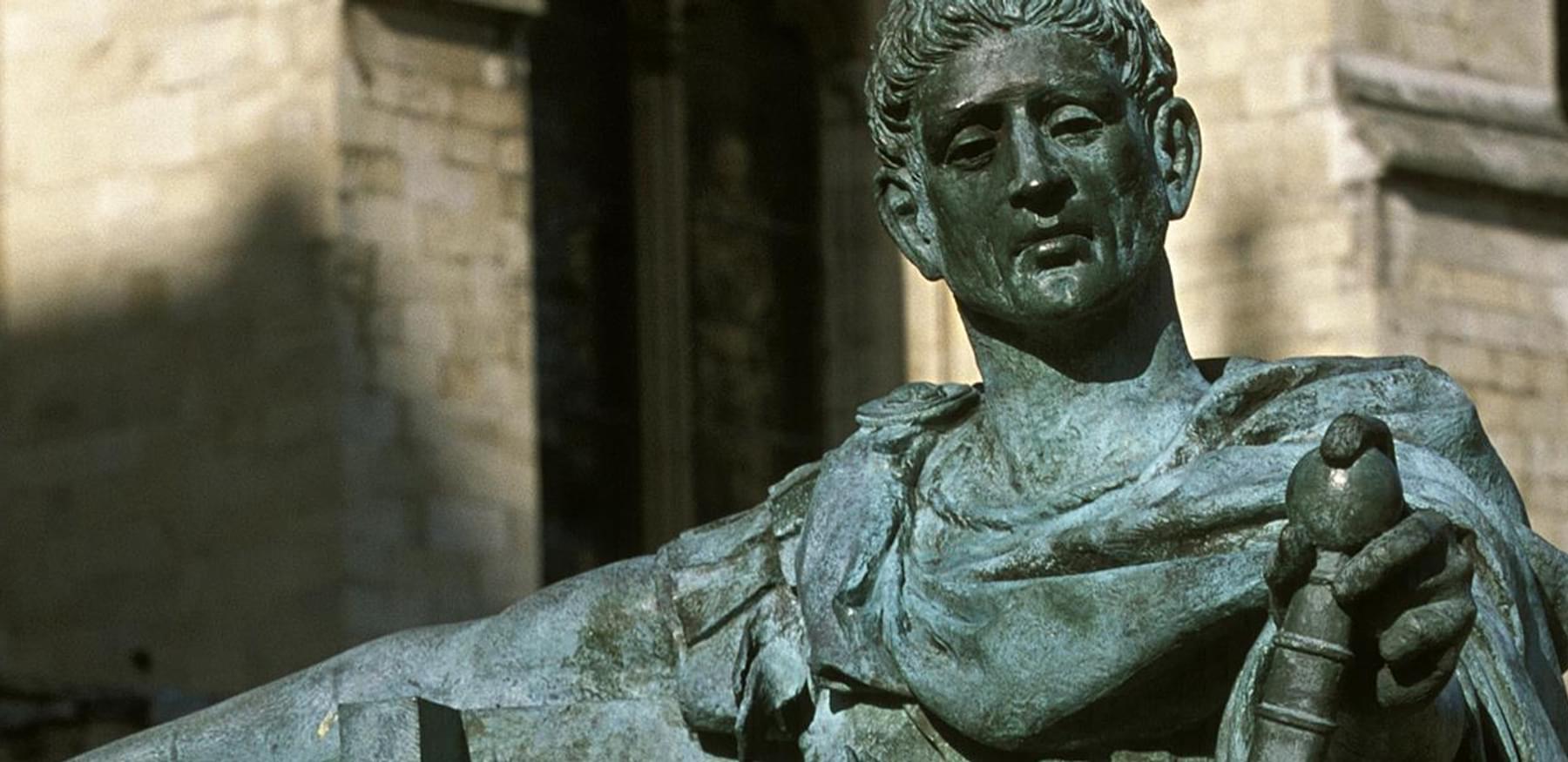York has a connection to many famous historical characters. The city was founded by Romans and for a long time was known as Eboracum. Here is where Septimius Severus – the African-born Roman Emperor died in 211AD. Septimius was an intimate friend of Marcus Aurelius and Commodus. Some say he may have even had a part in Commodus’ murder. Years later, in 306AD Constantine the Great – the first Christian Emperor was declared emperor in York, his statue stands near the York Minster.
After the Romans came Anglo-Saxons and the start of the ‘Dark Ages’. The major figure of that period – famous scholar Alcuin was educated in York. 9th century started with Vikings overtaking the rule in York. Eric Bloodaxe, the Viking warrior and the King of York, ruled over Jorvik (Viking name for York) for 14 years until being expelled in 954 and later murdered. He was most certainly representative of the bloodiest characters in York’s bloody history.
Middle Ages saw many famous characters to come out of York. Gunpowder Plotter Guy Fawkes was born and baptised in York. He was baptised at St Michael le Belfrey church in 1570, which still stands there, across the road from York Minster. Later, in 1958, Margaret Clitherow – wife of a Shambles butcher, was crushed to death for harbouring Catholic priests. Today her house is a shrine (located in the Shambles) and Margaret is revered as a martyr. Her hand, which was cut off after her death, is kept in the Bar Convent Museum. The famous dashing highwayman, Dick Turpin, was imprisoned and stayed at York Castle Museum until being hanged at York Racecourse in 1739. And George Hudson, the Railway King was born near York in 1800 and was a Councillor, Alderman, Member of Parliament and Lord Mayor of York.
York’s collection of curious objects demonstrates that little things say a lot. The fascinating facts they reveal speak volumes about the ancient city, which is home to many of the country’s rarest treasures. Tin of cocoa found beside the frozen remains of Captain Scott of the Antarctic’s survived one the world’s most famed and daring expeditions. It is now back in the city it was made in and visitors can see it at York’s Chocolate Story.
Yorkshire Museum is host to many historical objects including the most outstanding object of the Anglo-Saxon period to survive in Europe – The York Helmet. Dated to approximately 750 to 775AD, this iron and brass helmet was discovered when struck by the claw of a mechanical digger – luckily the operator stopped to check what had been hit. The York Helmet is at Yorkshire Museum until late January 2019before it depart on a tour around UK’s best museums. Another treasure of the museum is the Middleham jewel and ring – one of the finest pieces of Gothic jewellery found in Britain. It once belonged to the powerful Neville family of the Middleham Castle. A Roman hairpiece from the late 3rd to early 4th century can also be found here. This exceptionally rare hairpiece was discovered in York and probably belonged to a girl.
Another great artefact – The Horn of Ulf can be found in the Undercroft of York Minster. It was once given to the Chapter of York by a Viking nobleman called Ulf as a symbolic deed of trust. The large and ornate ivory horn together with the lands on which the Minster stands today. Another Viking artefact – the only known surviving example of a Viking-age knitted sock is on display at JORVIK Viking Centre, alongside a host of everyday items and relics that provide an unrivalled insight into Viking life.
The National Railway Museum houses the world’s finest collection of royal carriages including Queen Victoria’s last surviving saloon car. Built in 1869 this carriage is lavishly furnished and included luxuries such as an onboard toilet (which she never used).
